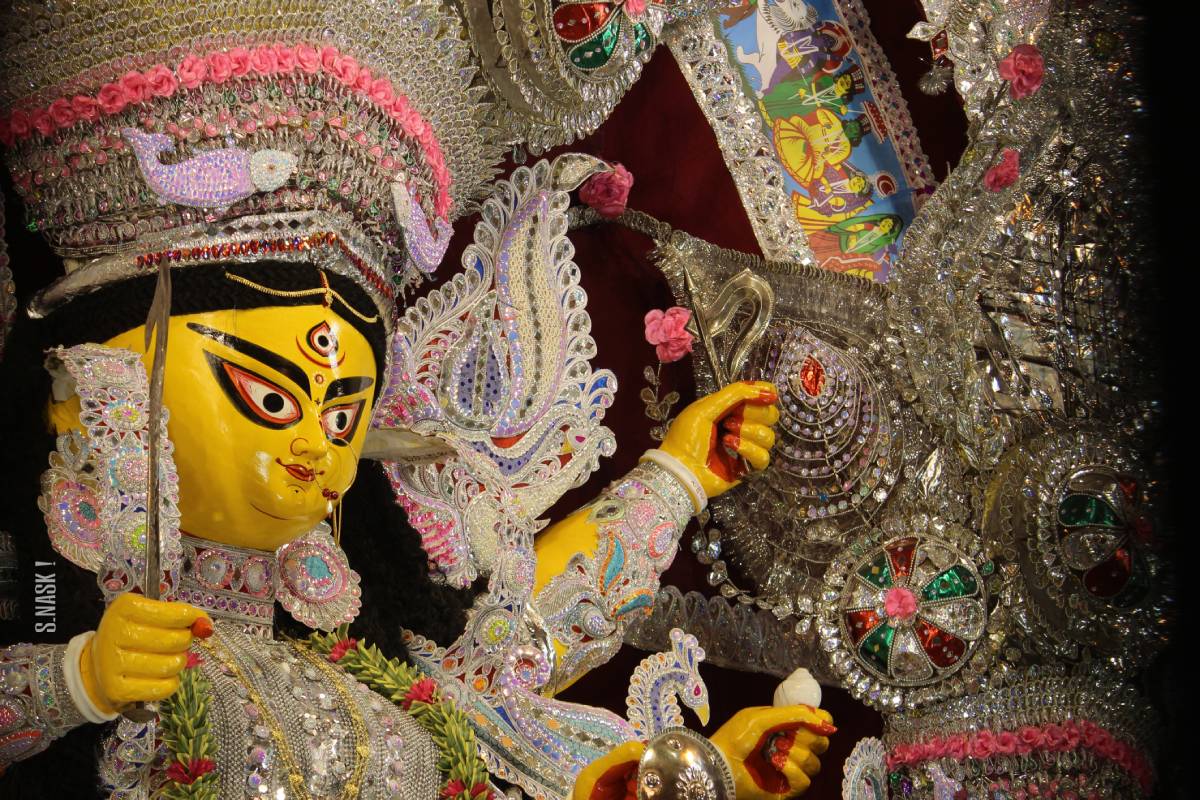In the year 1910, some local youths, and businessmen, of Balaram Basu Ghat Road area established a religious organization called Bhawanipur Sanatan Dharmatsahini Sabha. Regardless of the so-called class division, everyone who was willing to visit Maa Durga, was welcomed by the puja committee. This is the first instance of Barowari Pujo in Kolkata when breaking the shackles of bonedi-bari and zamindar-bari, Maa Durga came among the common people.
But what does the term “barowari” mean? Where did this even come from?
In the eighteenth century, the common people were generally not allowed to participate and even enter the puja of zamindar-bari. It was Guptipara, a village at Balagarh, Hooghly, where a group of twelve men was stopped by the gatekeepers to enter the household Durga Puja of a zamindar-bari.
According to some sources, it was the ruling Sen family, who stopped them from participating in their puja. After being refused they decided to carry out their own version of Durga puja. They started a campaign and were subscribed by the neighbours- thus began the tradition of Barowari Pujo. The form of the Goddess, which was worshipped at that time, was Bindhyabasini– a synonym for the Goddess Jagaddhatri.
The term “baroyari” (Baro-Yaar-I) refers to the puja “of twelve friends”: baro means “twelve”, and yaar indicates “friends”. According to another source, the term refers to the puja which has twelve sharers.
For Bhawanipur Sanatan Dharmatsahini Sabha, a permanent mandap (pandal), where the deity is worshipped nowadays maintaining the tradition, has been built next to the twin Shiva temples on top of Balaram Bose Ghat.
With the advancement of time, Kolkata witnessed the birth of various Barowari Pujo. In 1911 the Adi Sarbajanin of Shyampukur, in 1913 Shikdarbagan of Shyambazar, in 1919 Nebubagan, which is now known as Bagbazar Sarbajanin, one of the biggest traditional pujas in Kolkata, started within a decade.
Currently more than two thousand Barowari Pujo are held all over Kolkata. The meaning of “baro” here went far beyond its ordinary meaning; it doesn’t indicate the puja of twelve people, but the puja of “all”. Started in 1761 or arguably in the 7090s as a result of a refusal, Barowari Pujo actually implied the significance of what we call heterotopia.











